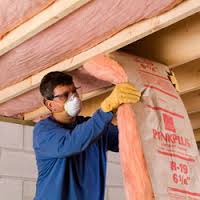Efficient use of energy plays a role in reducing your bills. It is a well-known fact that the lower the amount of energy you use, the lower the energy costs you pay. There are a number of ways you can use to reduce the energy you consume. Three proven methods to reduce energy consumption are proper insulation of your home, air sealing to reduce leakages and improving your home’s HVAC system. Well, let’s look at how insulation reduces the energy you consume.
Insulation and Energy Efficiency
To reduce the exchange of heat, insulation uses a surface. Examples of surfaces that insulation uses are the duct, roof, an attic or a wall. If your house is well insulated, a very small percentage of warm air will escape during the winter, and a small percentage of cold air will escape during the summer. This will reduce the amount of energy your house uses for heating and cooling. Therefore, improving the quality of insulation in your house will most likely reduce the cost you use to heat and cool your house.
Insulating Surfaces such as Walls, Attics and Floors
To achieve efficiency in insulating the surfaces of your house, you need to find the barrier responsible for preventing equalization of inside and outside air temperatures. One such barrier is the outer shell of your home. If your walls, roof and floors are well insulated, your heating and cooling system will use a small amount of energy. While insulating your house, emphasis should be on the roof. This is because heat rises and it provides an avenue for the movement of heat outside the house.
Insulating your roof will reduce this movement, and help keep your house warm during cold seasons. In insulating the attic, you can use batts of fiberglass.
Insulation of Ducts
A leaking duct has the capability of lowering energy efficiency because they allow air to move in and out of the house. Homes that have a central heating and air conditioning system are vulnerable to leaking ducts. To reduce energy costs, seal and insulate all ducts in your house. This will stabilize the movement of cool and warm air in your house. While insulating the ducts, focus first on the ducts that run through unfinished areas. These areas include basements and attics.
The Radiant Barrier
Another name for the radiant barrier is reflective insulation. The purpose of reflective insulation is to reduce the transfer of heat through radiation. This is by placing a surface that has the capability of reflecting thermal radiation. Reflective surface prevents radiated heat from being absorbed by the insulation material, reflecting it to the air space. The major intention of a radiant barrier is to keep the house cool, but it also has an effect of reducing energy costs you incur, while in the process of keeping your house cool.
Insulation and Energy Costs
Finally, the owner of a well-insulated house will use a small percentage of energy. This is because it regulates the amount of heat entering and leaving your house, resulting to the use of a small amount of energy to keep your house warm or cool. The lower the energy you use, the lower the costs you incur regarding energy bills.

